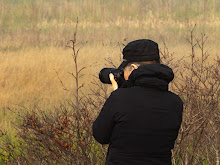In July I travelled through Copenhagen on my way to Greenland and spent a wonderful day at the Viking Museum in Roskilde.
The indoor museum contains the Skuldelev ships which had been sunk in the late 11th century to form part of a defence system for the Roskilde Fjord. The ships have been used as models to construct new Viking ships...some of which are in the Museum's harbour and used for harbour tours.
The indoor museum contains the Skuldelev ships which had been sunk in the late 11th century to form part of a defence system for the Roskilde Fjord. The ships have been used as models to construct new Viking ships...some of which are in the Museum's harbour and used for harbour tours.
The Museum is a "working museum" in the sense that ships are built in the museum's workshops, using materials and tools appropriate to the 11th century. Sailing the reconstructed ships provides feedback on the ships' designs, sailing and rigging techniques. This information is then used in future reconstruction projects.
Note the elegantly shaped reconstructed stem in the photo below...
The model, below, shows how one of the ships might have been rigged...
I was particularly struck by the simple fastening system used to connect the mast peak to the bow and stern of the ship. A small stick of wood is used to twist a loop in the shroud and then is passed through a loop of rope fastened to the stem. The stick is kept in place by a simple rope "keeper" around the shroud. Note also the "steering board" on the starboard side of the ship. It is attached by a piece of rope, knotted at its ends and passed through the ship's side and through and around the steering board.
In the photo below, the same fastening technique is used in one of the reconstructed boats...
The Museum's current project is the Gislinge Boat. Photos are being posted on-line as the project progresses (instagram.com/vikingshipmuseum).
The project is taking place out of doors, using only 11th century tools. At the time I visited, the keel and the stems had been created, fashioned out of an oak tree that had been split into planks.
The "squared" edges of the stem have been shaped to accept the ends of the planking which will then fit seamlessly against the stem creating the visually appealing lines which are the signature of Viking ship design.
The 11th century style tools are stored on the wall of the indoor boat building shed...and are themselves part of the museum's display
This worker below is using an 11th century style axe to shape some wedges which will later be used in a log-splitting demonstration. Note the tool chest behind him to his right.
The chest is shaped so that it would fit between the rowing benches on a ship and, in some instances, the chest itself might be used as seating for the rowers...











No comments:
Post a Comment